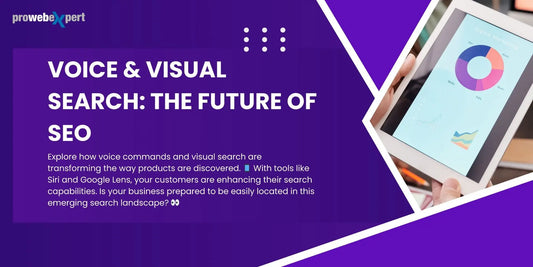
Quiet Commerce: How Brands Are Selling Without Selling
Share
In a world bombarded with digital ads, pop-ups, and pushy sales pitches, a new trend is emerging: Quiet Commerce. It’s subtle, intentional, and deeply customer-centric. Brands are moving away from hard selling and instead, they’re building ecosystems where commerce happens organically. From embedded shopping experiences to community-driven content and brand storytelling, Quiet Commerce is transforming how customers discover and buy products.
In this blog, we’ll explore what Quiet Commerce means, why it works, and how you can adopt it for your business in 2025 and beyond.
What Is Quiet Commerce?
Quiet Commerce is the art of driving sales without aggressive marketing tactics. Instead of loud ads and high-pressure funnels, brands create value-first experiences that gently guide users toward purchase decisions.
This includes:
-
Embedded commerce: Integrating products into blogs, videos, or social content.
-
Community-first marketing: Engaging audiences via forums, events, or social groups.
-
Narrative-driven branding: Letting your story do the selling.
-
Seamless UX: Prioritizing ease of use and frictionless checkout over flashy gimmicks.
In essence, it’s about creating trust, consistency, and relevance, so when the customer is ready to buy, your brand is already top-of-mind.
Why Quiet Commerce Is Trending in 2025
-
Consumer Burnout from Traditional Ads
Users are overwhelmed by banner ads, retargeting, and endless pop-ups. Quiet Commerce respects their space and wins attention by offering real value. -
Rise of Content-First Platforms
Platforms like Instagram, Pinterest, and TikTok now allow creators to embed shopping without disrupting content flow. It’s marketing that feels native. -
Trust Over Tactics
In 2025, consumers care more about authenticity than clever copy. Quiet Commerce fosters trust through user-generated content, honest reviews, and relatable storytelling. -
SEO and Algorithm Shifts
Search engines and social platforms now prioritize useful, experience-rich content over keyword stuffing and clickbait. This plays directly into the strengths of Quiet Commerce.
Real-World Examples of Quiet Commerce
-
Glossier grew from a blog to a beauty empire by building community first and integrating product recommendations naturally into content.
-
Nike Run Club doesn’t just sell shoes, it builds a lifestyle through community events, training plans, and an app that subtly introduces products.
-
Notion lets creators build and sell templates inside the tool itself, no big campaigns, just native commerce.
How to Apply Quiet Commerce to Your Brand
1. Tell Your Story Authentically
People don’t just buy products, they buy identities. Use your website, emails, and social media to consistently share why your brand exists.
-
Start with an “About” page that’s more than just a timeline.
-
Use real people, not stock photos.
-
Share founder stories, behind-the-scenes processes, or user journeys.
2. Create Embedded Shopping Touchpoints
Instead of relying on a single “Shop Now” button, integrate product experiences naturally:
-
Add clickable product cards in blog posts.
-
Use Instagram Stories with linked shopping.
-
Embed shoppable widgets in long-form content or tutorials.
3. Build or Tap Into Micro-Communities
-
Start a Facebook Group, Discord server, or Substack chat for your niche.
-
Host webinars, challenges, or mini virtual events.
-
Give early access or discounts to community members.
People trust peers more than brands. Let your biggest fans do the marketing.
4. Use Thoughtful UX Design
Frictionless experiences convert better than flashy ones. Quiet Commerce emphasizes:
-
Clean design
-
Clear navigation
-
One-click checkout options
-
Mobile-first layouts
5. Focus on Useful Content, Not Just Promotional Copy
Instead of blasting discounts or features, create:
-
How-to guides
-
Case studies
-
Customer stories
-
Tutorials with subtle product mentions
This boosts organic reach while warming up customers.
Metrics That Matter in Quiet Commerce
Traditional KPIs like click-through rates and impressions don’t fully capture the effectiveness of Quiet Commerce. Instead, track:
-
Engagement time (on blogs, videos, or community threads)
-
Referral sources (from niche influencers or content platforms)
-
Email reply rates and community participation
-
Conversion rates from content pages, not just ads
Final Thoughts
Quiet Commerce isn’t about being silent; it’s about being strategic. By aligning your marketing with trust, subtlety, and storytelling, you’ll not only convert customers but create long-term brand loyalty.
In 2025 and beyond, the brands that sell without selling will be the ones that lead. If you want to stay ahead of the curve, start rethinking your funnels and let your value speak louder than your ads.



